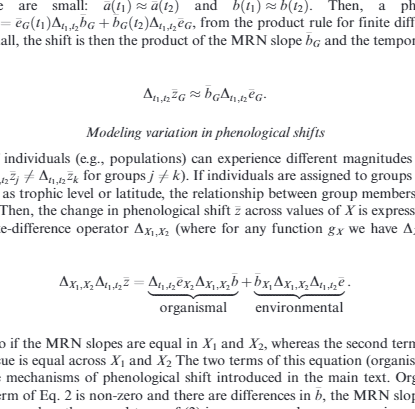From the abstract
Species across a wide range of taxa and habitats are shifting phenological events in response to climate change. While advances are common, shifts vary in magnitude and direction within and among species, and the basis for this variation is relatively unknown. We examine previously suggested patterns of variation in phenological shifts in order to understand the cue–response mechanisms that underlie phenological change. Here, we review what is known about the mechanistic basis for nine factors proposed to predict phenological change (latitude, elevation, habitat type, trophic level, migratory strategy, ecological specialization, species’ seasonality, thermoregulatory mode, and generation time). We find that many studies either do not identify a specific underlying mechanism or do not evaluate alternative mechanistic hypotheses, limiting the ability of scientists to predict future responses to global change with accuracy.
Notably, in this paper we presented a conceptual framework (Fig 2) and statistical description (Box 2) to decompose trait change into contributions from environmental and organismal mechanisms.
